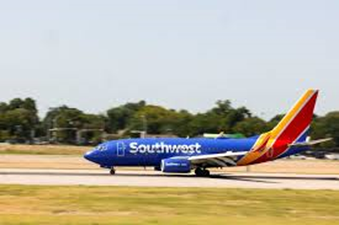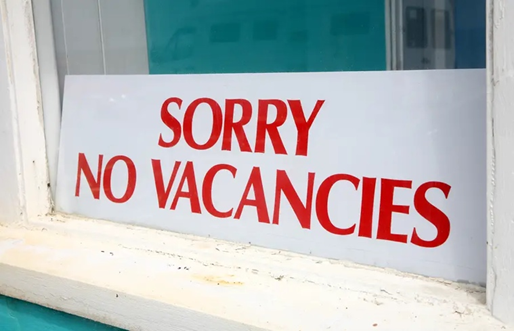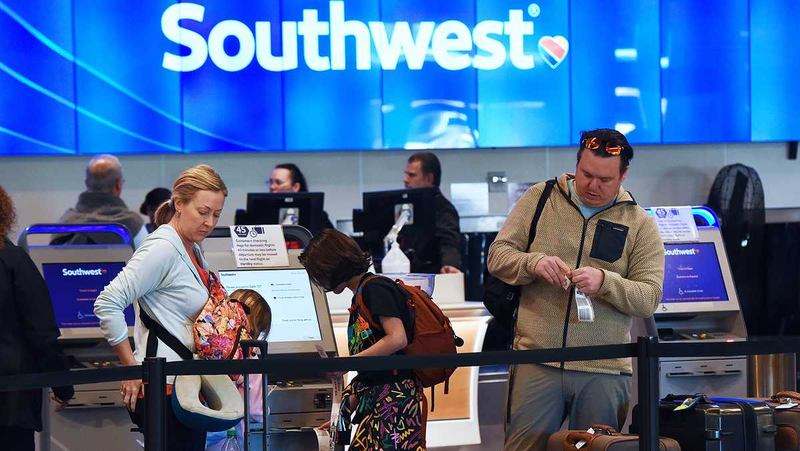Southwest Airlines: Navigating a New Era of Downsizing and Strategic Restructuring
Input
Changed
Southwest Airlines, the beloved low-cost carrier that revolutionized air travel with its no-frills approach and strong customer loyalty, is now facing a pivotal moment in its history. In an unprecedented move, the airline has announced that it will cut 15% of its corporate workforce, marking its first-ever layoffs. The decision to downsize, along with the accompanying shift in the company’s strategies, signals a new chapter in Southwest’s corporate evolution. This layoff, while significant, is not just about cutting jobs; it’s a reflection of the broader challenges the airline faces in a rapidly changing industry.

For decades, Southwest has been known for its unique business model, which prioritized low fares, high customer satisfaction, and a strong corporate culture. The airline’s success was built on a foundation of reliability, simplicity, and a commitment to providing affordable travel options. However, as the aviation industry continues to evolve, particularly in the face of ongoing economic pressures, Southwest has had to adapt in ways that are altering the very strategies that once made it an industry leader. The latest layoff announcement is a sign of the deep changes taking place at Southwest Airlines and within the broader low-cost carrier (LCC) industry.
Southwest’s First Layoffs: A Major Turning Point
On February 2025, Southwest Airlines revealed that it would be laying off 15% of its corporate employees. This move marks the first time in the airline’s history that it has resorted to large-scale layoffs, signaling the immense financial pressures it is currently facing. While the company’s commitment to employees and its corporate culture has long been a hallmark of its brand, the realities of the airline industry have forced Southwest to reconsider its approach.

The layoffs are part of a broader restructuring effort aimed at streamlining operations, reducing costs, and ensuring the company’s long-term viability. Despite being a dominant player in the U.S. airline market, Southwest has struggled financially in recent years, with losses mounting and competition intensifying. As airlines worldwide continue to feel the effects of rising fuel prices, labor shortages, and increasing customer expectations, Southwest is no exception. The decision to downsize is a response to these pressures, as the airline works to reshape its workforce to align with its evolving business model.
In its announcement, Southwest stated that the layoffs would primarily affect corporate roles, with the airline shifting its focus to more operational and customer-facing positions. While the company has expressed its commitment to preserving its unique culture, there is no denying that this restructuring is a significant departure from the company’s traditional approach to staffing. As Southwest looks to the future, it is clear that the airline is no longer operating under the same conditions that defined its past successes.
Financial Struggles and the Need for Downsizing
Southwest Airlines has been grappling with financial challenges for several years now, and the latest round of layoffs comes as the company continues to face mounting losses. In the past year, Southwest posted a significant decline in its profits, which can be attributed to several factors, including rising fuel costs, an unpredictable global economy, and increased competition from both legacy carriers and new entrants in the low-cost carrier space.
Despite its reputation for efficiency and customer service, Southwest’s financial difficulties have intensified as the industry has evolved. The airline's traditionally low-cost business model, which once allowed it to offer fares that undercut competitors, has become increasingly difficult to maintain as operating costs rise. The need for higher wages, more investments in technology and infrastructure, and rising fuel prices have all contributed to a financial strain that has led to the recent layoffs.
The decision to cut 15% of corporate jobs is seen as an attempt to reduce costs and increase profitability, but some analysts argue that this may not be enough. Given the airline's ongoing losses, many experts believe that Southwest will need to make more sweeping changes to its business operations to remain competitive in the long term. Simply cutting jobs may not be sufficient to address the broader financial challenges facing the airline. As a result, Southwest is also exploring other cost-saving measures, including limiting hiring, reducing flight operations at certain airports, and adjusting its overall network strategy.
Moreover, the U.S. low-cost carrier market has become increasingly competitive, with airlines like Spirit and Frontier gaining market share. Southwest’s traditional advantage of being able to offer low fares without sacrificing quality has come under pressure, and the airline is now forced to adapt to new market realities. In this context, the downsizing of its corporate workforce is just one piece of a larger puzzle that Southwest must solve if it is to regain its financial footing.

Restructuring Strategies: A Shift in Business Model
In addition to downsizing its corporate workforce, Southwest is also rethinking its long-standing strategies. The airline’s management has made it clear that it is looking to restructure not only its workforce but also its operations, focusing on adapting to changing consumer expectations and market dynamics. In the past, Southwest’s business model was centered around its highly efficient and customer-centric approach, which included offering free checked bags, a simple ticketing process, and quick turnarounds. However, as the airline industry evolves, Southwest is increasingly shifting its focus toward new growth areas that are better suited to the current landscape.
One of the key changes Southwest is making involves its approach to staffing. As is the case with many companies across various industries, Southwest is embracing the trend toward remote work and flexible staffing arrangements. The company is shifting away from a traditional in-office workforce and is increasingly hiring freelancers and remote workers. This aligns with broader trends seen in other sectors, where companies are looking for more flexible, cost-effective staffing solutions. By reducing its reliance on in-house employees and embracing a more remote and freelance workforce, Southwest aims to cut operational costs while still maintaining its ability to adapt quickly to changing market demands.
This shift also reflects the broader trend of cost-cutting and efficiency in the airline industry. Many U.S. low-cost carriers (LCCs) are adopting similar strategies, focusing on reducing overhead and improving operational flexibility. The goal is to ensure that airlines can continue to offer low fares while keeping their expenses in check. While this shift may be difficult for some employees, it is in line with the broader market realities that airlines must contend with as they navigate a challenging economic environment.
Industry-Wide Trends: The Evolution of U.S. LCCs
Southwest is not the only U.S. low-cost carrier that is reevaluating its strategies. The entire LCC sector is undergoing significant changes as airlines adjust to the new realities of the market. In particular, many LCCs are shifting their focus to more streamlined, cost-effective operations that reduce the need for a large in-house workforce. This includes moving away from traditional business models that relied heavily on in-office staff and embracing technology-driven solutions that enable remote work and more flexible staffing arrangements.
The rise of remote work and freelance employment in the airline industry is just one example of how the LCC sector is evolving. As airlines seek to reduce costs and improve efficiency, they are turning to digital tools and cloud-based platforms to manage operations and enhance customer service. These changes are not limited to Southwest; other LCCs such as Spirit and Allegiant are also embracing these trends, which have been further accelerated by the global COVID-19 pandemic.
Moreover, the shift toward a more decentralized workforce is just one aspect of the broader strategic realignment that is happening in the airline industry. As competition increases and customer expectations evolve, LCCs are being forced to reimagine their business models. The days of the simple, low-cost fare with minimal extras are quickly fading, as consumers demand more flexibility, better amenities, and personalized services.
The Future of Southwest Airlines: Challenges and Opportunities
The layoffs at Southwest Airlines and the accompanying restructuring represent a moment of transformation for the company. As Southwest navigates this new era, it faces numerous challenges, including the need to balance cost-cutting with maintaining the company’s unique corporate culture and customer loyalty. The shift toward remote work and freelancing may help the airline reduce costs, but it also presents risks in terms of employee morale and brand identity.
Moreover, Southwest must find a way to adapt its business model to the evolving landscape of the airline industry. The growing competition from other LCCs, combined with changing consumer expectations, means that Southwest will need to innovate in order to stay ahead. Whether through new routes, enhanced customer services, or better technology, the airline will have to continually evolve to meet the demands of an increasingly complex market.
In conclusion, Southwest Airlines’ decision to cut 15% of its corporate workforce and restructure its operations is a major turning point for the company. While this move may be necessary to address the airline’s financial struggles, it also signals the broader changes taking place in the aviation industry. As Southwest adapts to new market realities, the airline’s future will depend on how successfully it navigates these challenges while retaining the qualities that have made it a beloved brand among customers.





















